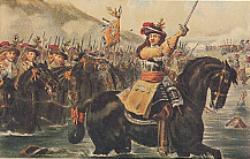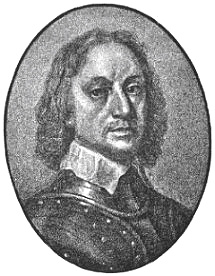|
|
Irish Slaves.Irish Slave Trade.Page under Construction |
|
| |
Read
about Irish Slaves
From 'A Concise History of Ireland' by P
W Joyce |
||||
1625 saw a proclamation being issued by King James I, declaring that all Irish political prisoners were to be sold as slaves to the plantations in the West Indies and North America. This is borne out by a census carried out on Monaural in the West Indies which found that 69% of the inhabitants were Irish slaves. In
1607 the leading Irish families in There followed an intensification of the plantation of Ireland, Protestant settlers and farmers were brought from England and Scotland, to become tenants of the new landowners. The Irish who had previously occupied the land were forced into marginal mountain and bog land to survive as best they could. As ever more settlers arrived to occupy the land tensions grew culminating in The 1641 Rebellion. This was led by Owen Roe O'Neill a nephew of Hugh O'Neill , Owen Roe had left Ireland as a youth of 17 during The Flight of the Earls. He arranged his release from the Spanish army and returned to Ireland to lead the rebellion, along with his cousin Sir Phelim O'Neill. This was a dark period in Irish history with many atrocities carried out on both sides. After some initial success the rebellion eventually failed, caused by disagreements between Preston and O'Neill but perhaps mainly by the arrival in 1649 of Oliver Cromwell in Ireland with an army of 20,000 men. On 11th September 1649 after breaching the walls with cannon Cromwell massacred the entire garrison of Droheda consisting of 2,600 people including many civilians. This scene was repeated at Wexford where 2,000 were killed without distinction of age or sex. After this few felt the inclination to stand against his brutal tactics. After Droheda and Wexford the entire country eventually came under his control. It has to be remembered that many of the Irish opposed to Cromwell were supporters of the royalist cause of Charles I who was eventually beheaded by Cromwell. Cromwell was determined that the Irish should be punished, General Hugh Duffy O'Neill, "Black Hugh," who, like his uncle, Owen Roe O'Neill, had previously served with the "Wild Geese" in the Spanish army. At his command were 12,000 troops, mostly (Catholic) Ulstermen and all but 50 of whom were infantry. Ormonde promised to send aid but did not. It was in Black Hugh that Cromwell met his greatest adversary in Ireland Cromwell's son, Henry, was made Major General in command of the forces in Ireland. It was under his reign that thousands of Irish men, women and children were shipped to the West Indies. From 1648 to 1655 over 12,000 Irish political prisoners were shipped to Barbados. Although indentured servants (Irish included) had been coming to Barbados since 1627, this new wave of arrivals was the first to come involuntarily. As a result, in the 12 years following the revolt, known as the Confederation War, the Irish population fell from 1,466,000 to 616,000. Over 550,000 Irishmen were killed, numbers vary as how many Irish people were transported as slaves, but reliable estimates put the number of Irish shipped out at between 30,000 and 80,000 persons. The women and children who were left homeless and destitute had to be dealt with , so they were rounded up and sold, too. At this time The Dutch and Portuguese dominated the slave trade in the early 17th century and most white English landowners in Barbados and the neighboring islands were unable to purchase slaves of African origin, this caused a labour shortage which the newly arrived Irish prisoners filled. However the Irish slaves in The West Indies found the climate too hot and had a tendency to die in the heat, and were not as well suited to the work as African slaves, but African slaves had to be bought. Irish slaves could be kidnapped if there weren't enough prisoners, and of course, it was easy enough to make Irish prisoners by manufacturing some petty crime or other. This made the Irish the preferred "livestock" for English slave traders for 200 years. . A law, published in 1657, read: "Those who fail to transplant themselves into Connaught (Ireland's Western Province) or (County) Clare within six month s... Shall be attained of high treason.. Are to be sent into America or some other parts beyond the seas..."(1) Any who attempted to return would,"suffer the pains of death as felons by virtue of this act, without benefit of Clergy."(2) In 1742, a document entitled Thurloe's State Papers, published in London, opined that: "..It was a measure beneficial to Ireland, which was thus relieved of a population that might trouble the planters; it was a benefit to the people removed, which might thus be made English and Christians ... a great benefit to the West India sugar planters, who desired men and boys for their bondsmen, and the women and Irish girls... To solace them."(4) So the English plantation owners of the 17th century can be justifiably be called sex traffickers. This episode of Irish history has been edited out of the school history curriculum in both the North and South of Ireland and is greeted by disbelief by most people who view the historic slave trade as only applying to Black Africans, not white people. |
||||
Article
in The Irish Examiner Feburary 4 2013 |
|
|
|
 went on slave raiding trips
during and after the Roman withdrawal from England, on one of
these raids he is believed to have captured St Patrick from
Wales or Cornwall.
went on slave raiding trips
during and after the Roman withdrawal from England, on one of
these raids he is believed to have captured St Patrick from
Wales or Cornwall.
 Ireland
left for the continent, fearing imprisonment and execution by the English,
this event became known as
Ireland
left for the continent, fearing imprisonment and execution by the English,
this event became known as